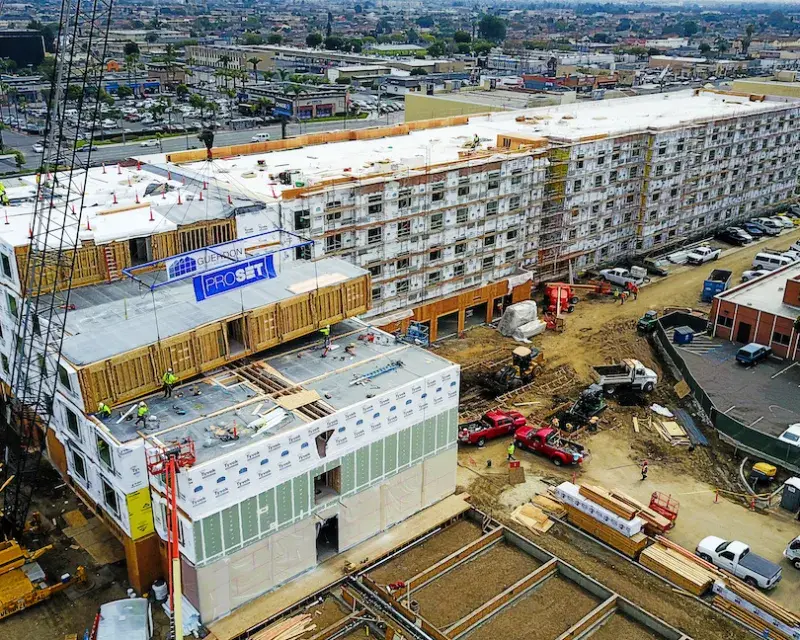The industrial sector is undergoing a transformation, and modular construction is leading the charge. Traditionally, large industrial projects required long construction timelines and substantial on-site labor. However, with the rise of prefabricated and modular construction methods, industrial engineering projects are now becoming faster, more cost-effective, and more sustainable. This blog delves into how modular construction is reshaping the future of industrial projects and why this approach is gaining popularity across the globe.
—
What is Modular Construction?
Modular construction involves the off-site manufacturing of building components in a controlled factory setting, which are then transported to the project site for assembly. Unlike traditional construction, where everything is built on-site from the ground up, modular components are prefabricated in sections—often referred to as “modules”—that are later pieced together to form a complete structure.
Key Characteristics of Modular Construction:
– Off-Site Fabrication: Components are manufactured in factories with stringent quality control measures.
– On-Site Assembly: Once the modules are completed, they are transported to the construction site for rapid assembly.
– Design Flexibility: Modules can be customized and combined in different ways to meet specific project needs.
—
Benefits of Modular Construction in Industrial Projects
Modular construction brings several advantages that make it particularly suitable for industrial projects, where speed, cost, and efficiency are paramount.
1. Faster Project Timelines
Key Points:
– Concurrent Processes: Site preparation and module fabrication can happen simultaneously, reducing the overall timeline.
– Pre-Engineered Solutions: Modular units are often pre-engineered, which accelerates the construction process.
One of the most significant benefits of modular construction is its ability to shorten project timelines. Since modules are built off-site while site preparation occurs simultaneously, this concurrent process leads to faster completion times. For industrial projects with tight deadlines, such as factories, power plants, or refineries, this time savings can translate to significant cost reductions and earlier project commissioning.
2. Cost Efficiency
Key Points:
– Less On-Site Labor: Modular construction reduces the need for on-site workers, lowering labor costs.
– Reduced Waste: Factory-based construction leads to better resource management and reduced material waste.
Cost efficiency is another major driver for the adoption of modular construction in industrial projects. By manufacturing modules in a factory setting, companies can better control material usage, reduce waste, and minimize on-site labor. Moreover, fewer on-site workers reduce costs associated with accommodation, safety, and transportation, making modular construction a more economical option for large-scale industrial projects.
3. Improved Quality Control
Key Points:
– Factory Precision: Components are manufactured in a controlled environment, ensuring higher quality standards.
– Repeatability: Modular construction allows for consistent, repeatable quality across multiple projects.
Modules are constructed in highly controlled environments, which helps maintain superior quality compared to traditional on-site construction. Factors like weather, inconsistent labor, and site conditions are eliminated, leading to fewer defects and higher consistency in the final product. For industrial projects, where structural integrity and safety are paramount, this level of quality control is crucial.
—
Applications of Modular Construction in Industrial Projects
Modular construction methods are finding their way into a variety of industrial sectors, transforming how projects are planned, executed, and delivered.
1. Power Plants and Energy Facilities
In the energy sector, where efficiency and reliability are key, modular construction is used to build power plants, including wind farms, solar plants, and even nuclear facilities. Pre-fabricated components like turbine housing, control rooms, and other specialized units can be delivered and assembled on-site quickly and accurately.
Example: Wind farms often utilize modular designs for quick assembly of turbine towers, reducing the environmental footprint and installation time.
2. Manufacturing and Processing Plants
For industries such as automotive, food processing, or pharmaceuticals, modular construction allows for the rapid assembly of production lines, clean rooms, and utility systems. Prefabricated modules can be customized to meet specific regulatory requirements, such as cleanroom standards or hazardous material handling protocols.
Example: In automotive manufacturing, modular designs have been employed to build assembly line stations and control centers, allowing for faster setup and expansion.
3. Oil & Gas and Chemical Refineries
Modular construction is gaining traction in the oil and gas industry, particularly for building offshore platforms, refinery components, and pipelines. Given the hazardous and remote nature of these sites, having pre-built, high-quality modules reduces on-site risks and speeds up installation times.
Example: Offshore oil platforms use modular units for living quarters, power systems, and safety rooms to reduce the need for extensive on-site construction in difficult environments.
—
Sustainability and Modular Construction
Modular construction is not just about speed and cost—it’s also a sustainable solution for industrial projects. With an emphasis on resource efficiency and waste reduction, modular construction is contributing to a greener construction process.
Sustainable Benefits:
– Reduced Waste: Factory-based construction minimizes the overuse of materials and recycles unused components.
– Energy Efficiency: Modules can be designed for energy efficiency, integrating green technologies like solar panels or insulation systems.
– Lower Carbon Footprint: Since fewer workers and materials are transported to the site, modular construction reduces the overall carbon footprint of industrial projects.
Tip: To enhance sustainability, choose modular systems that incorporate green building certifications, such as LEED or BREEAM, for reduced environmental impact.
—
Challenges of Modular Construction
While modular construction offers numerous advantages, it’s not without challenges. These include:
– Transportation Logistics: Moving large modules to the project site can be complicated, particularly for remote or difficult-to-access locations.
– Upfront Planning: Modular construction requires extensive planning and design upfront, as any changes mid-construction can be more difficult to implement compared to traditional methods.
– Customization Limits: While modular systems offer flexibility, highly specialized industrial projects may face limitations in customization compared to conventional builds.
—
Conclusion
Modular construction is revolutionizing industrial projects by providing faster, more efficient, and cost-effective solutions. With benefits like reduced project timelines, improved quality control, and enhanced sustainability, it’s no surprise that industries ranging from energy to manufacturing are adopting modular methods. As this trend continues to grow, modular construction will play an increasingly important role in building the future of industrial engineering.






